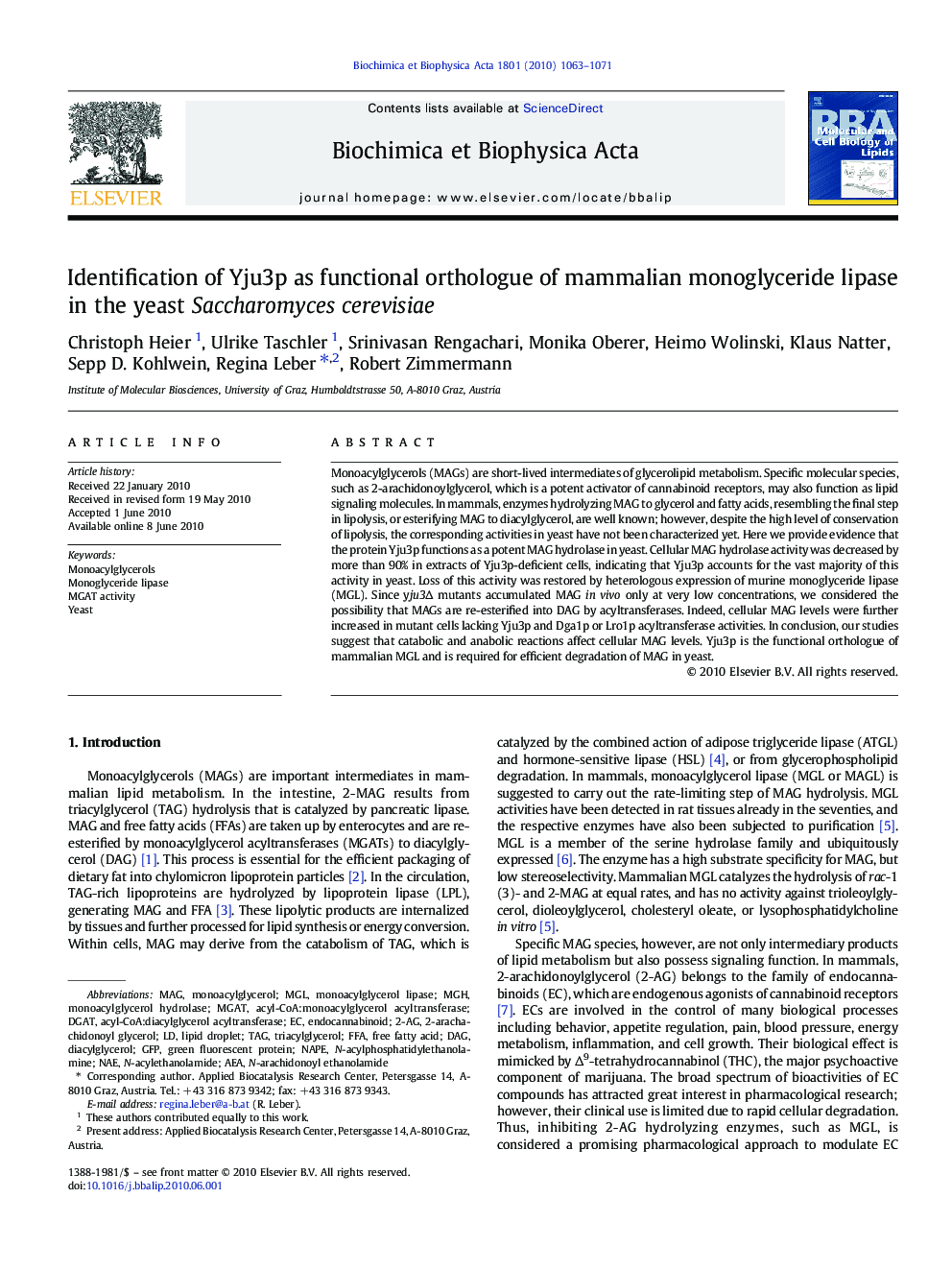| Article ID | Journal | Published Year | Pages | File Type |
|---|---|---|---|---|
| 8303349 | Biochimica et Biophysica Acta (BBA) - Molecular and Cell Biology of Lipids | 2010 | 9 Pages |
Abstract
Monoacylglycerols (MAGs) are short-lived intermediates of glycerolipid metabolism. Specific molecular species, such as 2-arachidonoylglycerol, which is a potent activator of cannabinoid receptors, may also function as lipid signaling molecules. In mammals, enzymes hydrolyzing MAG to glycerol and fatty acids, resembling the final step in lipolysis, or esterifying MAG to diacylglycerol, are well known; however, despite the high level of conservation of lipolysis, the corresponding activities in yeast have not been characterized yet. Here we provide evidence that the protein Yju3p functions as a potent MAG hydrolase in yeast. Cellular MAG hydrolase activity was decreased by more than 90% in extracts of Yju3p-deficient cells, indicating that Yju3p accounts for the vast majority of this activity in yeast. Loss of this activity was restored by heterologous expression of murine monoglyceride lipase (MGL). Since yju3Î mutants accumulated MAG in vivo only at very low concentrations, we considered the possibility that MAGs are re-esterified into DAG by acyltransferases. Indeed, cellular MAG levels were further increased in mutant cells lacking Yju3p and Dga1p or Lro1p acyltransferase activities. In conclusion, our studies suggest that catabolic and anabolic reactions affect cellular MAG levels. Yju3p is the functional orthologue of mammalian MGL and is required for efficient degradation of MAG in yeast.
Keywords
FFADGATMGHmGlNAE2-AGmonoacylglycerolacyl-CoA:diacylglycerol acyltransferaseMAGMGATGFPN-acylphosphatidylethanolamineAEAendocannabinoidFree fatty acidtriacylglycerolTAG یا triacylglycerols diacylglycerolDAGlipid dropletmonoacylglycerol lipaseMonoglyceride lipaseYeastMonoacylglycerolsNAPEgreen fluorescent protein
Related Topics
Life Sciences
Biochemistry, Genetics and Molecular Biology
Biochemistry
Authors
Christoph Heier, Ulrike Taschler, Srinivasan Rengachari, Monika Oberer, Heimo Wolinski, Klaus Natter, Sepp D. Kohlwein, Regina Leber, Robert Zimmermann,
